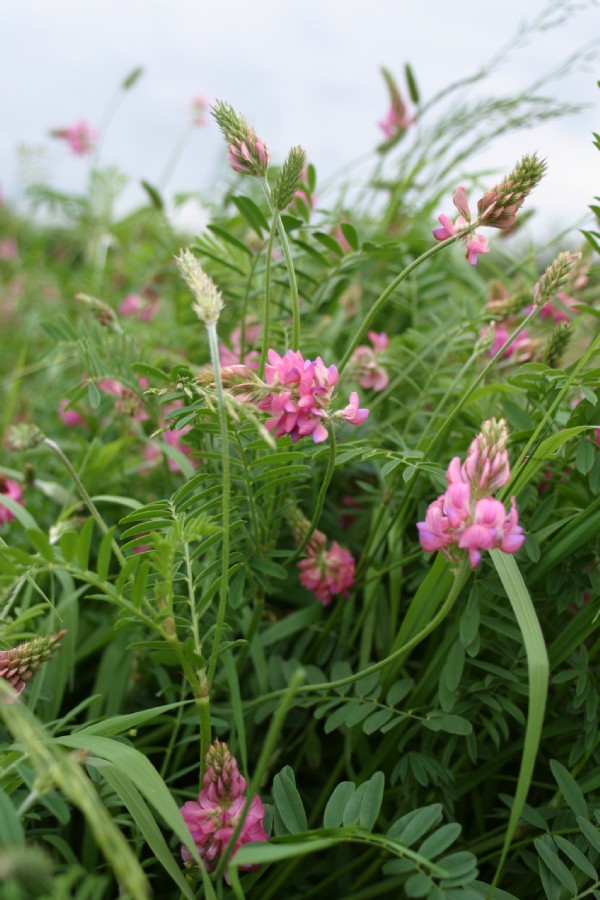

It’s heartening to see that the recently concluded €4 LegumePlus project, in which we have been actively involved for the past four years, is achieving its goal of raising the profile and popularity of fodder legume Sainfoin. From a very modest acreage, we’ve already seen sales of sainfoin rocket this year - a 100% increase on 2015 January-June figures, demonstrating that farmers are experimenting with this plant now.
And our partners in the project have been attracting plenty of media attention. Wilbert Pellikaan, Assistant Prof. Animal Nutrition at Wageningen University, has recently been interviewed and featured in Dutch national newspaper ‘Trouw’. This in turn has been picked up by a variety of websites, leading to farmers asking for more information on how to grow and use sainfoin as fodder for their livestock. All the necessary information is available in our Sainfoin Grower’s Guide, which is available to download here.
A translation of the ‘Trouw’ article appears below:
New fodder for good milk production and climate
Wageningen researchers have found new fodder for the Dutch dairy farmers. The forage Sainfoin (also called Esparcette) ensures that the cow produces more milk and less methane.
Sainfoin is an ancient crop that was forgotten by the mid-twentieth century, says animal nutrition specialist Wilbert Pellikaan. However, the beneficial effects of legumes as fodder was already known. Sainfoin means 'healthy hay' in French. Cows find it a tasty fodder. In addition, it contains tannins. These are bioactive substances which improve the efficiency of protein digestion of the grass in the rumen of the cow. This improves the protein supply of cattle. Moreover, the tannins work as a preventive against bloat (gas accumulation in the rumen) and worm infections, and reduce the methane emissions.
From the Animal Nutrition Group Pellikaan did ten years of research on the unknown crop in two European research projects, named HealthyHay and LegumePlus. In that context, the Vietnamese researcher Nguyen Thi Huyen did feeding trials in recent years with Sainfoin. In a limited trial design with six cows, whereby the cows were given a food ration by 30 percent Sainfoin, Huyen found that the cows eating 'health hay' produced almost ten percent more milk and ten percent less methane.
"But the most interesting is that the energy balance of the cows adapted," says Pellikaan. "The tannins in the plant resulted in that the cow retain more energy in the form of body protein and less in body fat. This could have a positive effect on the condition of cows in late lactation, as milk production declines'. Pellikaan wants to do further research with more cows, in which he wants to specifically examine which type of tannins have an effect on microbiota. "Indeed, there are different types of tannins. Within the condensed tannins, certain types seem to work effectively. “
In addition, the cultivation/ breeding of the crop can still be improved. It mainly grows well on calcareous soils, but gives a lower yield on acidic soils according to Pellikaan. A field trial of him with Sainfoin on river clay soil yielded good results, another trial on sandy soils did not. Participants with the EU-projects work to develop crops with optimal properties for different climatic conditions. Sainfoin seems especially interesting as an alternative to the forage alfalfa and clover on dairy farms on poorer soil. The advantage here is that Sainfoin is a legume which absorbs nitrogen from the air, so the plant also performs well on marginally fertilized soil.
Along with Roselinde Goselink Pellikaan is currently doing a follow-up study with Sainfoin at the Dairy Campus in Leeuwarden. He wants to know if the cows actually prefer diets with Sainfoin over roughage diets without the unknown fodder.
Date Posted: 15th June 2016



